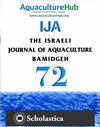Transcriptome analysis reveals the important roles of a two-component system, flagellar assembly, active efflux system and outer membrane proteins in the anti-quinolone ability of Vibrio harveyi from orange-spotted grouper (Epinephelus coioides)
IF 0.5
4区 农林科学
Q4 FISHERIES
引用次数: 0
Abstract
The drug resistance of Vibrio harveyi in aquaculture became more severe because the control of Vibriosis depends majorly on the current antibiotics. Transcriptomes of a wild-type strain (VS) and its quinolone-resistant mutants (VR) of V. harveyi were respectively sequenced by RNA-seq technology. A total of 2,082 unigenes were obtained after de novo splicing and assembly. 129 genes were identified with significant differential expression in strain VR compared to strain VS, among which 65 were up-regulated and 64 down-regulated. Then, functional annotation and enrichment analysis of these differentially expressed genes (DEGs) were performed. GO enrichment results showed that DEGs focused mainly on cell structure, substance metabolism, and transporter. COG classification of the DEGs mainly focused on amino acid transport and metabolism, cell wall/membrane biosynthesis, carbohydrate transport and metabolism, ribosomal structure, and biosynthesis. KEGG pathways related to a two-component system, ABC transport system and flagellar assembly (ko02040) were enriched significantly, and 9 genes associated with quinolone-resistance ability, including genes for resistance-related transport proteins, outer membrane proteins, and DNA repair-related proteins were discovered through analysis of the drug-resistance related genes. Ten DEGs (including the above part genes of 9 drug resistance-related genes) in the transcriptome data were taken to analyze their expression with real-time qPCR. The results were the same as the changes of the above transcriptome analysis, further confirming the reliability of the transcriptome sequencing and data analysis. In a word, genes from a two-component system, flagellar assembly, active efflux system and outer membrane proteins take great roles in the quinolone-resistance of V. harveyi. These results provide enough information for further study on the molecular mechanism of quinolone-resistance and give a helpful transcriptomic resource to unravel the contact between quinolone-resistance and metabolic pathways in Vibrios.转录组分析揭示了双组分系统、鞭毛装配、主动外排系统和外膜蛋白在橙斑石斑鱼哈维弧菌抗喹诺酮类药物能力中的重要作用。
水产养殖中哈氏弧菌的耐药性日益严重,因为弧菌病的控制主要依赖于现有的抗生素。采用RNA-seq技术对哈氏弧菌野生型菌株(VS)及其喹诺酮耐药突变体(VR)的转录组进行了测序。经过从头拼接和组装,共获得2,082个unique基因。129个基因在菌株VR中与菌株VS有显著差异表达,其中65个基因上调,64个基因下调。然后,对这些差异表达基因(DEGs)进行功能注释和富集分析。氧化石墨烯富集结果表明,DEGs主要集中在细胞结构、物质代谢和转运体上。DEGs的COG分类主要集中在氨基酸转运与代谢、细胞壁/膜生物合成、碳水化合物转运与代谢、核糖体结构和生物合成等方面。与双组分系统、ABC转运系统和鞭毛组装(ko02040)相关的KEGG通路显著富集,通过对耐药相关基因的分析,发现9个与喹诺酮耐药能力相关的基因,包括耐药相关转运蛋白基因、外膜蛋白基因和DNA修复相关蛋白基因。取转录组数据中的10个deg(包括9个耐药相关基因的上述部分基因),采用real-time qPCR分析其表达情况。结果与上述转录组分析的变化一致,进一步证实了转录组测序和数据分析的可靠性。综上所述,来自双组分系统、鞭毛装配、主动外排系统和外膜蛋白的基因在哈维氏菌的喹诺酮类耐药中发挥了重要作用。这些结果为进一步研究喹诺酮耐药的分子机制提供了足够的信息,并为揭示弧菌喹诺酮耐药与代谢途径之间的联系提供了有益的转录组学资源。
本文章由计算机程序翻译,如有差异,请以英文原文为准。
求助全文
约1分钟内获得全文
求助全文
来源期刊
CiteScore
0.90
自引率
16.70%
发文量
49
审稿时长
3 months
期刊介绍:
Information not localized

 求助内容:
求助内容: 应助结果提醒方式:
应助结果提醒方式:


